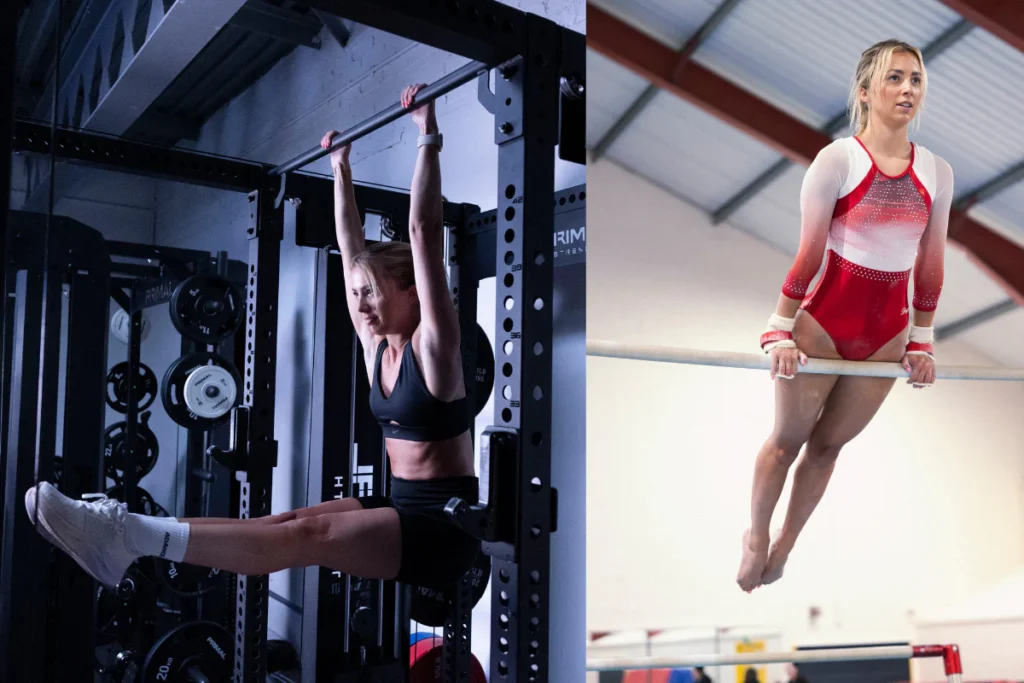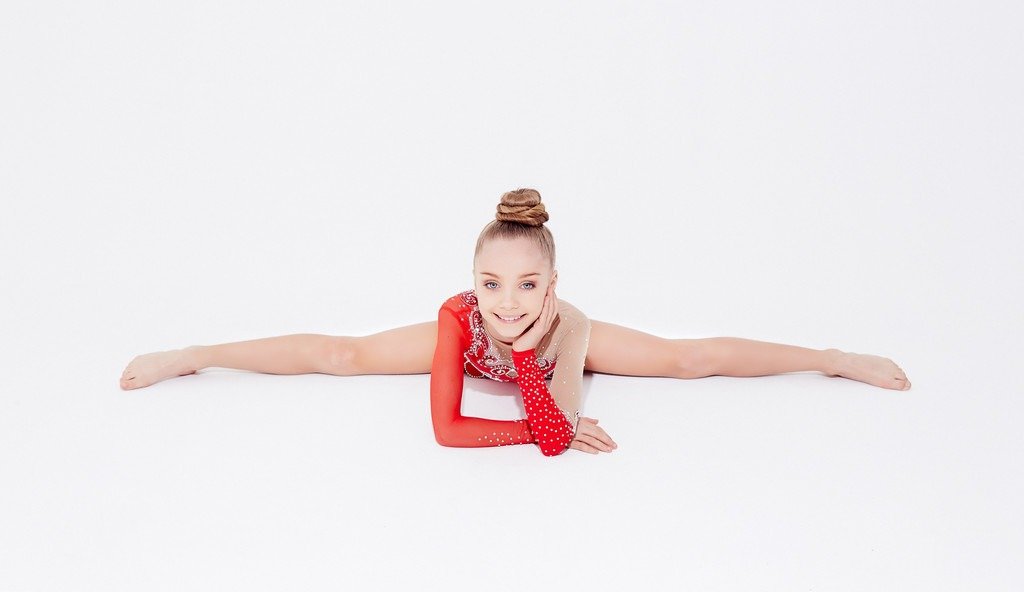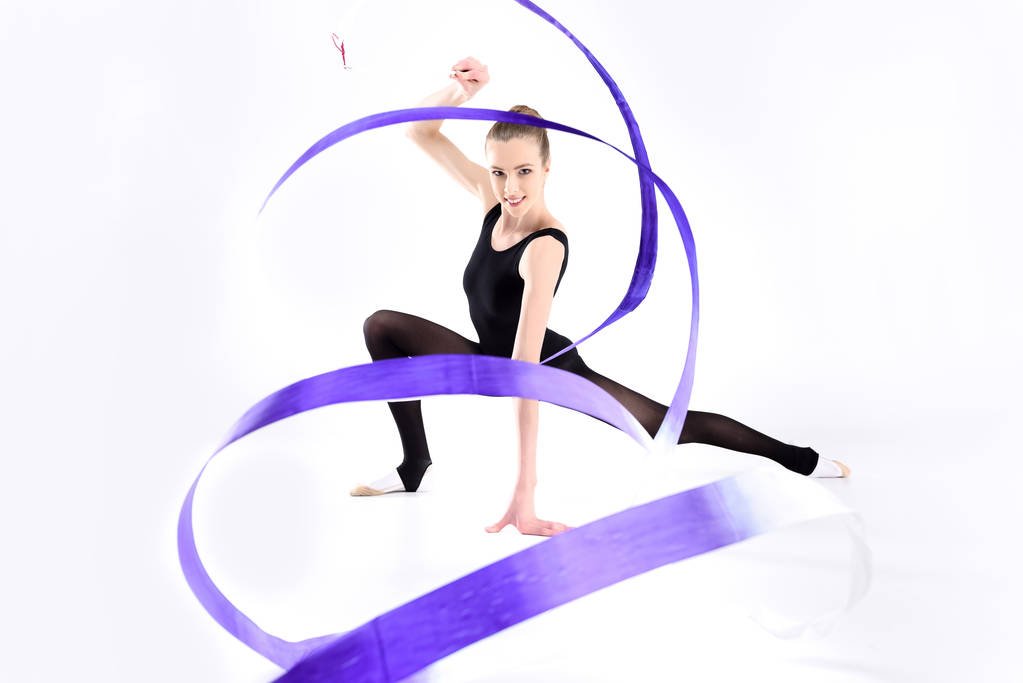Artistic gymnastics is one of the most well-known sports at the Olympic Games. It combines strength, balance, coordination, and creativity. Athletes perform routines on different pieces of equipment called apparatus. Each routine is judged for how difficult it is and how well it is performed.
This sport is very popular at the Olympics because it shows both athletic power and artistic movement. Watching gymnasts flip, twist, and land with control makes it exciting for audiences all over the world.
Main Apparatus in Artistic Gymnastics
Men and women compete on different sets of apparatus.
Men’s Events
- Floor exercise
- Pommel horse
- Still rings
- Vault
- Parallel bars
- Horizontal bar
Women’s Events
- Vault
- Uneven bars
- Balance beam
- Floor exercise
| Gender | Apparatus | Example of Common Skills |
|---|---|---|
| Men | Floor | Tumbling passes, strength holds |
| Men | Pommel horse | Circles, flairs, handstands |
| Men | Rings | Iron cross, planche, dismounts |
| Men | Vault | Handspring, Yurchenko, Tsukahara |
| Men | Parallel bars | Swing elements, releases, handstands |
| Men | Horizontal bar | Giants, release moves, twists |
| Women | Vault | Yurchenko, Amanar |
| Women | Uneven bars | Release moves, pirouettes, dismounts |
| Women | Balance beam | Jumps, acro series, turns |
| Women | Floor | Tumbling, dance elements, leaps |
History of Artistic Gymnastics at the Olympics
Artistic gymnastics has been part of the Olympic Games since the very first modern Olympics in 1896. At that time, only men competed. Women joined in 1928. Over time, the rules and apparatus have changed to make the sport more fair, exciting, and safe.
Gymnastics was not as specialized. Some competitions included rope climbing or even track and field elements.
By the mid-20th century, the events became more standardized and closer to what we see today.
Timeline of Olympic Gymnastics
| Year | Milestone |
|---|---|
| 1896 | Men’s gymnastics introduced in Athens |
| 1928 | Women’s gymnastics added in Amsterdam |
| 1952 | Modern scoring system introduced |
| 1976 | Nadia Comăneci scored first perfect 10 |
| 2006 | Open-ended scoring system introduced |
Expert Insight
According to Dr. Bill Sands, a gymnastics researcher and former coach, “The sport has evolved more in the last 50 years than in the first 100. Equipment technology, training science, and judging have transformed gymnastics into a modern performance art.”
Events for Men and Women
Men’s gymnastics has six events, while women have four. Each event highlights different strengths. Some are based on power, others on balance or artistry.
Men’s Events
- Floor Exercise – Routines last up to 70 seconds and include tumbling, jumps, and strength elements.
- Pommel Horse – Requires constant movement with circular motions and leg swings.
- Still Rings – Demands upper body strength with moves like the iron cross.
- Vault – Gymnast runs, jumps onto a springboard, and flips over the vault table.
- Parallel Bars – Mix of swings, flight elements, and strength holds.
- Horizontal Bar – High bar swings with release moves and big dismounts.
Women’s Events
- Vault – Similar to men’s vault but scored slightly differently.
- Uneven Bars – Two bars at different heights, requiring transitions and releases.
- Balance Beam – Narrow beam where gymnasts perform jumps, flips, and turns.
- Floor Exercise – Choreographed routine with music combining tumbling and dance.
| Event | Key Focus | Common Mistakes |
|---|---|---|
| Floor | Power, tumbling | Step out of bounds, landing short |
| Pommel Horse | Rhythm, continuous swing | Loss of form, touching apparatus |
| Rings | Strength, control | Wobble in holds, bent arms |
| Vault | Speed, height | Low landing, steps after landing |
| Parallel Bars | Flow, strength | Extra swing, bent elbows |
| Horizontal Bar | Big releases | Missed grip, fall |
| Uneven Bars | Fluid transitions | Form breaks, missed handstand |
| Beam | Balance, precision | Wobble, fall |
| Women’s Floor | Artistry, tumbling | Miss timing with music, land out of bounds |
Scoring and Judging
Scoring in artistic gymnastics is often confusing for new fans. Since 2006, the system has been open-ended. This means there is no maximum score. Instead, routines are judged with two main parts:
- Difficulty Score (D-score): Based on the skills performed. The harder the routine, the higher the score.
- Execution Score (E-score): Starts at 10.0 and deductions are taken for mistakes like bent knees or steps.
Example of a Score
| Component | Points |
|---|---|
| Difficulty (D) | 6.0 |
| Execution (E) | 8.4 |
| Total Score | 14.4 |
Common Deductions
- Small step on landing: 0.1–0.3
- Bent arms or legs: 0.1–0.5
- Major fall: 1.0 point deduction
- Incomplete twist or turn: 0.3–0.5
Tip for Viewers
When watching, focus on clean landings and body position. Even if a gymnast performs a very hard skill, they may lose points if the execution is poor.
Training and Preparation for Olympic Gymnastics

Training for Olympic gymnastics is one of the toughest in all sports. Athletes often start at a very young age and train for many years before reaching elite level.
Daily Training
- 4–6 hours per day
- Conditioning (strength and flexibility)
- Skill drills on apparatus
- Routine repetitions
- Dance and choreography (especially for women)
Nutrition and Recovery
- Balanced meals with high protein for muscle repair
- Hydration to avoid fatigue
- Regular physiotherapy and massage
- Sleep: at least 8–10 hours per night
| Focus Area | Example Routine |
|---|---|
| Warm-up | 20 min cardio, stretching |
| Strength | Weight training, core exercises |
| Skills | Vault drills, bar connections |
| Choreography | Floor routine with music |
| Recovery | Ice bath, stretching, mental training |
Expert Insight
Coach Valeri Liukin once said: “Gymnastics at the Olympic level is not just about who trains hardest. It’s about who trains smartest, balancing repetition with recovery.”
Famous Olympic Gymnasts and Their Impact
Nadia Comăneci (Romania)
- Scored first-ever perfect 10 in 1976.
- Changed how people viewed gymnastics scoring.
Simone Biles (USA)
- Known for unmatched difficulty and power.
- Has several skills named after her.
Kohei Uchimura (Japan)
- Dominated men’s all-around for nearly a decade.
- Called “King Kohei” for his consistency.
| Gymnast | Country | Achievements |
|---|---|---|
| Nadia Comăneci | Romania | First perfect 10, 5 Olympic golds |
| Simone Biles | USA | 7 Olympic medals, 25 World titles |
| Kohei Uchimura | Japan | 2 Olympic all-around titles |
Challenges and Risks in Artistic Gymnastics
Physical Risks
- Stress fractures
- Torn ligaments
- Overuse injuries
Mental Pressure
- Fear of mistakes on big stage
- Anxiety from media attention
- Balancing training and personal life
Safety Tips for Training
- Use proper mats and spotting
- Do not rush skills before ready
- Focus on technique over difficulty
Expert Quote
Sports psychologist Dr. Alan Goldberg says, “Mental readiness is as important as physical skill in gymnastics. Without calm focus, even the best-trained athletes can falter.”
How Fans Can Better Understand Gymnastics at the Olympics

Watching gymnastics is more enjoyable when you know what to look for.
Tips for Watching
- Look for clean landings with no steps.
- Notice straight legs and pointed toes.
- Watch for fluid movement between skills.
- On floor routines, check if gymnast stays in time with music.
Beginner’s Guide Table
| What to Watch | Why It Matters |
|---|---|
| Landings | Show control |
| Form | Shows quality of basics |
| Connections | Increase difficulty |
| Expression | Especially important in women’s floor |
| Height of skills | Shows power and confidence |
The Future of Artistic Gymnastics at the Olympics

Gymnastics is always changing. Rules and equipment are updated to make routines safer and more exciting. Technology is now used to help judges, including video reviews.
Possible Future Changes
- More mixed-gender events
- Digital judging with sensors
- Higher focus on artistry to balance difficulty
Expert View
Bruno Grandi, former FIG president, said: “Gymnastics must evolve, but it must not lose its beauty. Difficulty must be balanced with elegance.”
Conclusion
Artistic gymnastics at the Olympics is more than just flips and twists. It is a sport that combines athletic skill, mental strength, and artistic performance. From its early beginnings in 1896 to today’s high-level routines, gymnastics has become a central part of the Olympic Games.
For fans, knowing the basics of apparatus, scoring, and performance details can make watching much more enjoyable. With future changes and rising stars, artistic gymnastics will continue to inspire millions across the world.

